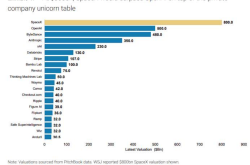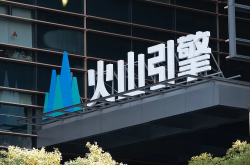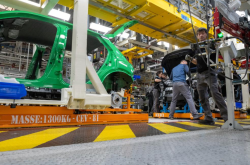UASE 2025: Beyond DJI Drones, The Low-Altitude Economy Takes Flight
![]() 05/26 2025
05/26 2025
![]() 560
560
Beyond Drones: A Deeper Dive
Following CES in January, MWC in February, and AWE in March, UASE 2025 arrived in May as anticipated.
Unlike the previous consumer-focused exhibitions, the Shenzhen International UAV Exhibition (UASE 2025) served as a platform for the industrial chain. It not only facilitated precise product matching between buyers and sellers but also provided insights into the latest advancements and trends in the global electronic information industry.
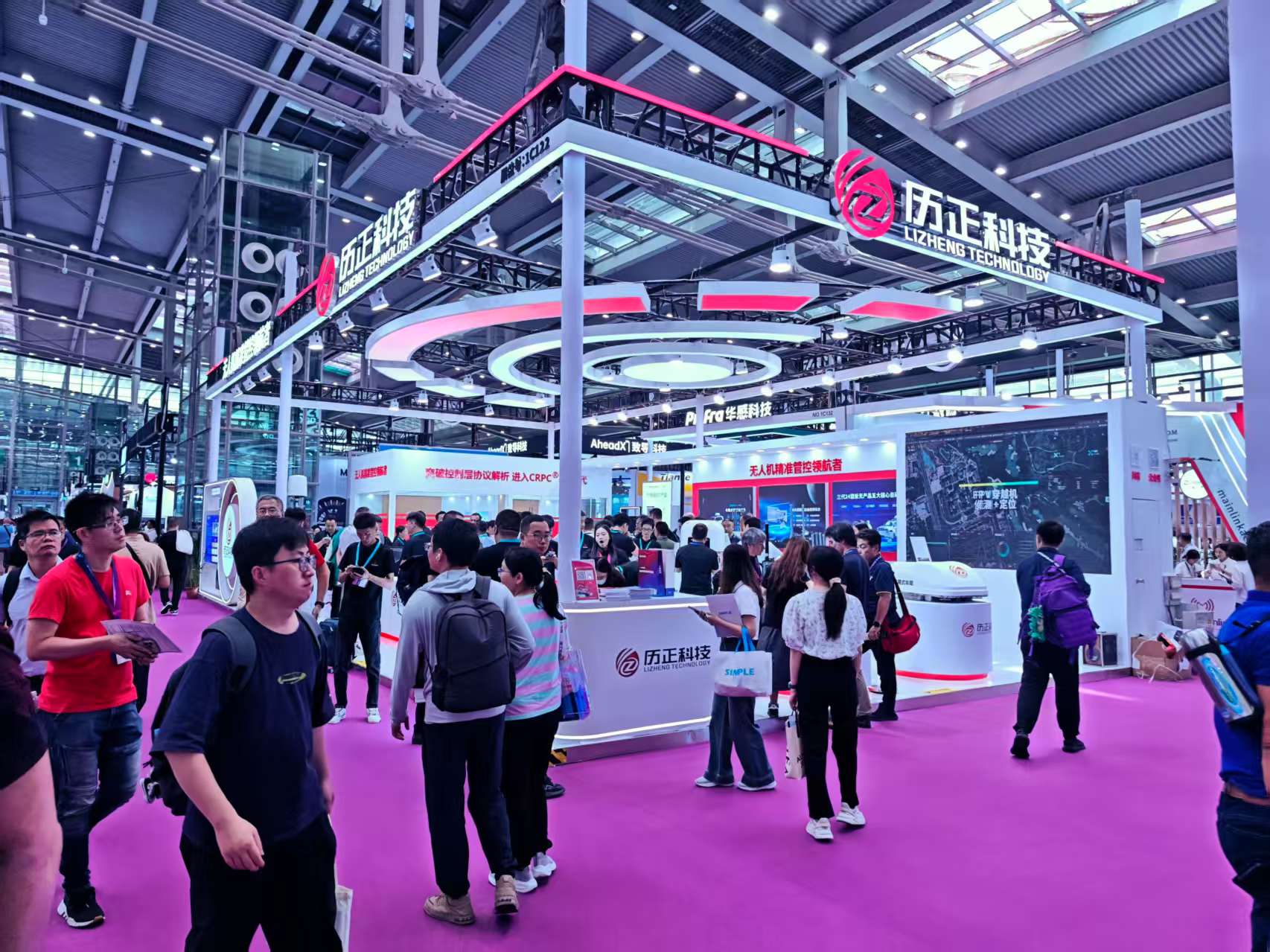
(Image source: Leitech)
This time, Leitech's reporting team visited the Shenzhen Convention and Exhibition Center (Futian) to bring you the latest updates. After navigating through the exhibition halls and countless booths, let me share my experiences and highlight the noteworthy innovations from drone manufacturers and supply chain vendors.
Beyond DJI: A Drone Extravaganza
Even though I've been to this venue multiple times, stepping into the Shenzhen Convention and Exhibition Center felt like entering a world brimming with technology and the future.
The exhibition spanned two halls, showcasing a diverse array of advanced products and related technologies, including drones, eVTOLs (Electric Vertical Takeoff and Landing aircraft), flight control systems, avionics systems, power systems, material manufacturers, and anti-drone equipment.
As an international drone exhibition, the drone exhibits naturally captured my attention.
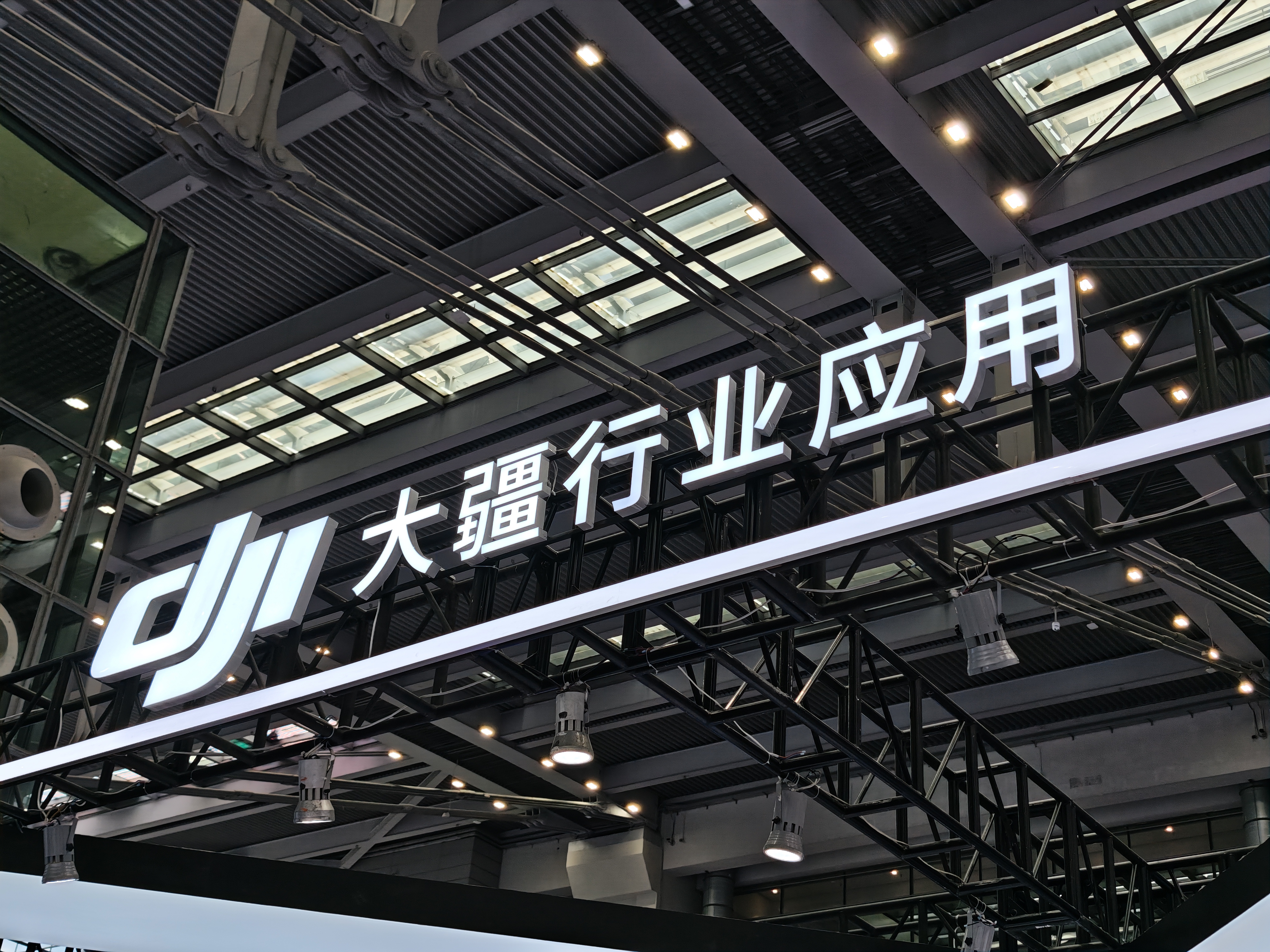
(Image source: Leitech)
DJI, the renowned drone brand, had a packed booth (1B263) from the start. Visitors from both China and abroad flocked to the booth, showcasing its widespread popularity.
DJI exhibited its latest light industry drone, the Matrice 4 series, at the show.
Contrary to my expectation of small drones, the DJI Matrice 4 is rather compact. It inherits the professional, compact, and foldable characteristics of the DJI Matrice series, significantly reducing storage volume through folding, thus facilitating transportation and storage. Its dark gray appearance also aligns with the professional and steady feel of industrial applications.
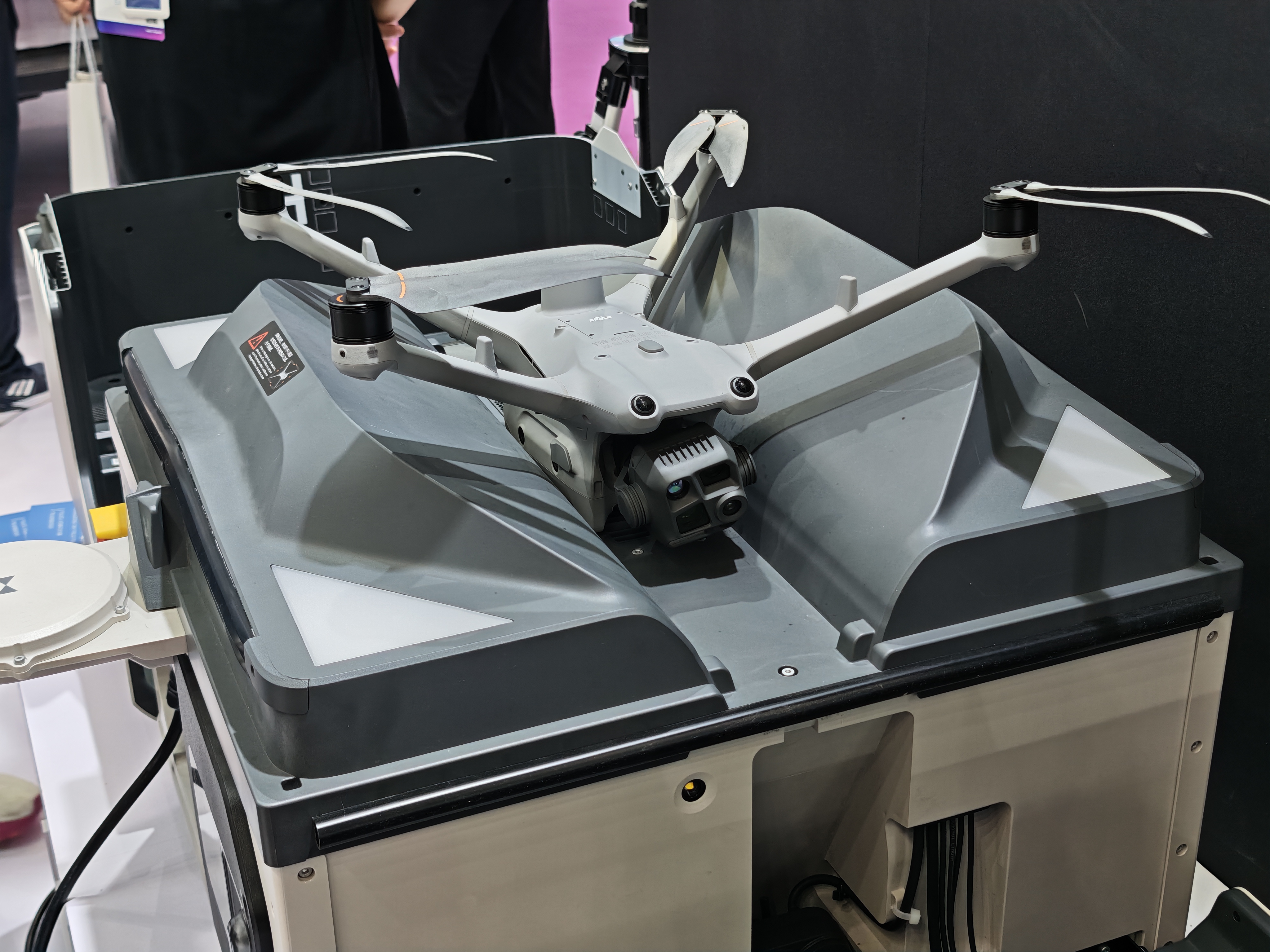
(Image source: Leitech)
The DJI Matrice 4 includes two models: Matrice 4E and Matrice 4T.
The Matrice 4T is equipped with a wide-angle camera, medium telephoto camera, telephoto camera, laser ranging module, thermal imaging camera, and near-infrared fill light, making it suitable for critical areas such as power inspection, emergency rescue, public safety, and water conservancy and forestry monitoring.
On the other hand, the Matrice 4E is equipped with a wide-angle camera (often featuring a larger CMOS sensor and mechanical shutter, optimized for surveying and mapping), medium telephoto camera, telephoto camera, and laser ranging module, focusing on high-precision professional surveying and mapping and detailed surface inspection.
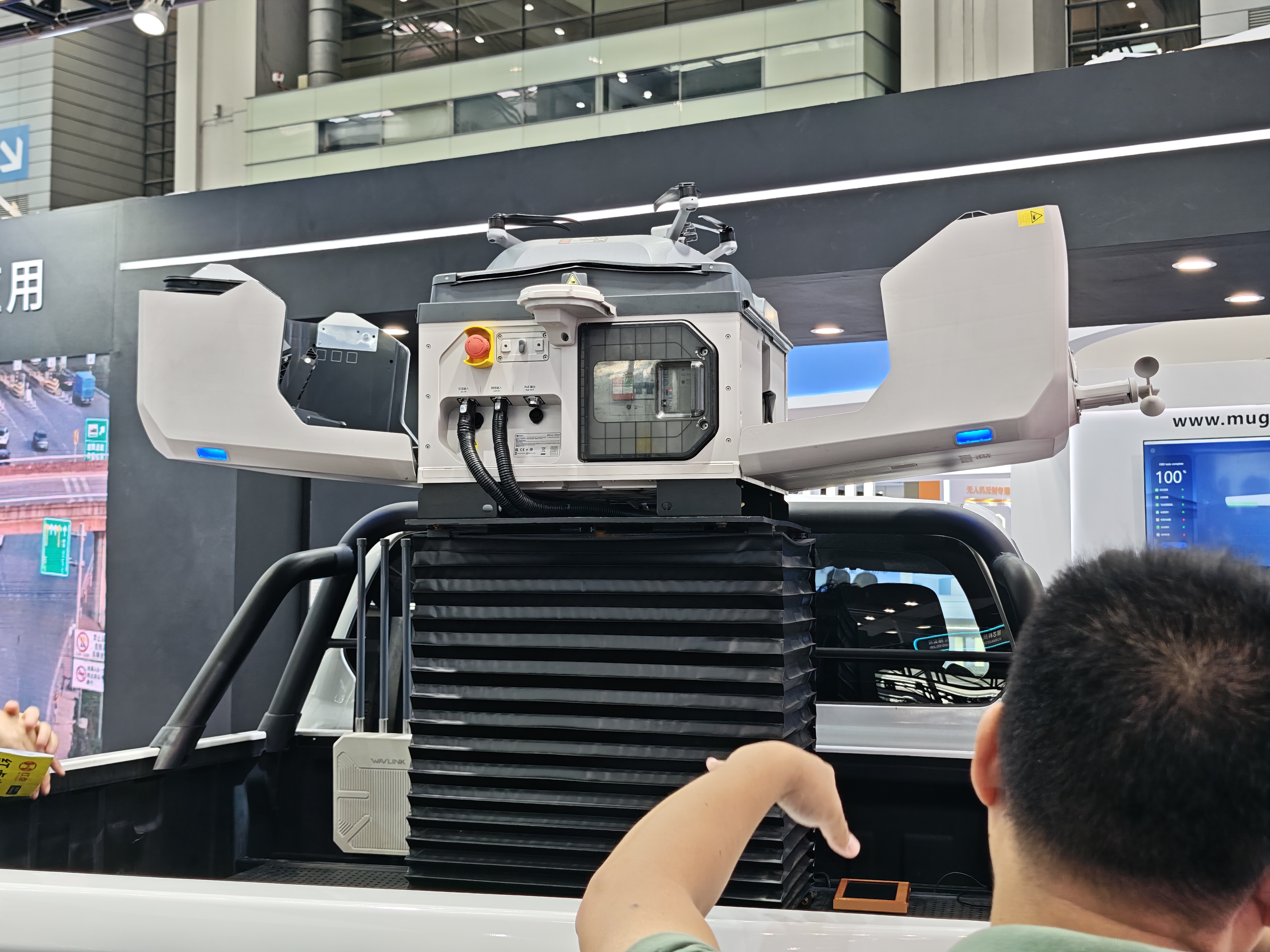
(Image source: Leitech)
Paired with this product is the world's first vehicle-mounted unmanned platform, DJI Airport 3, which claims to transition drone operations from "manual control" to "fully automatic deployment".
DJI also showcased mature application cases of its products in agriculture, public safety, surveying and mapping, and other fields, such as spraying cotton defoliants and pesticides, using visible light and infrared for emergency search and rescue, traffic management, disaster assessment, and high-precision surveying and mapping, which were quite enlightening.
Beyond industrial drones, there were numerous other types of products on display.
Chongqing Tuohang Technology's heavy-lift unmanned helicopter garnered significant attention. According to booth staff, Tuohang Technology's products have been widely used in emergency firefighting/rescue, land and resource survey, transportation in plateau/island areas, scientific research towing services, and other fields, making it one of the most practically applied models in the field of low-altitude special logistics.
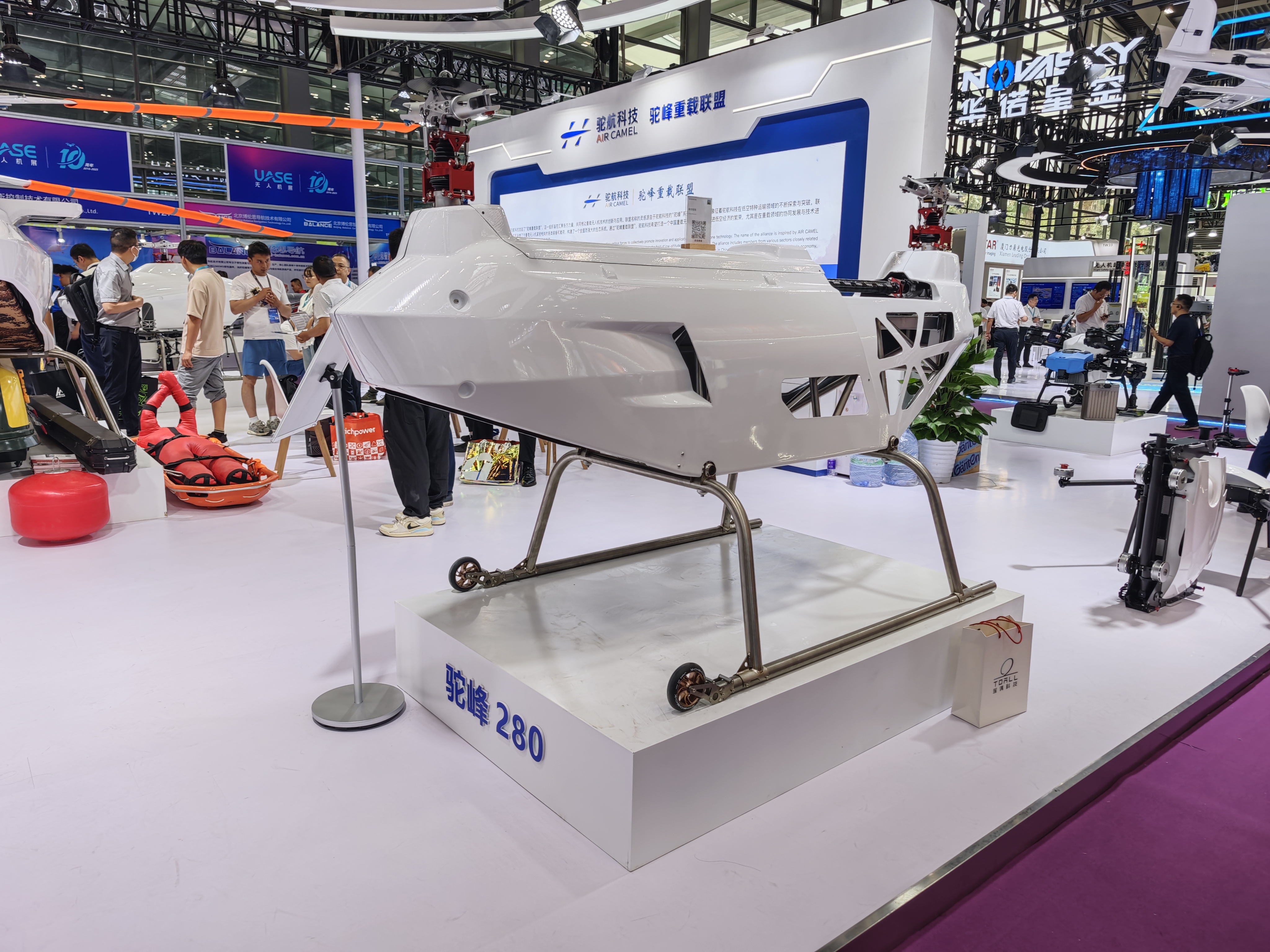
(Image source: Leitech)
A similar manufacturer, Haili Tianmeng, also showcased a large number of medium-sized drones at the exhibition, creating quite a spectacle.
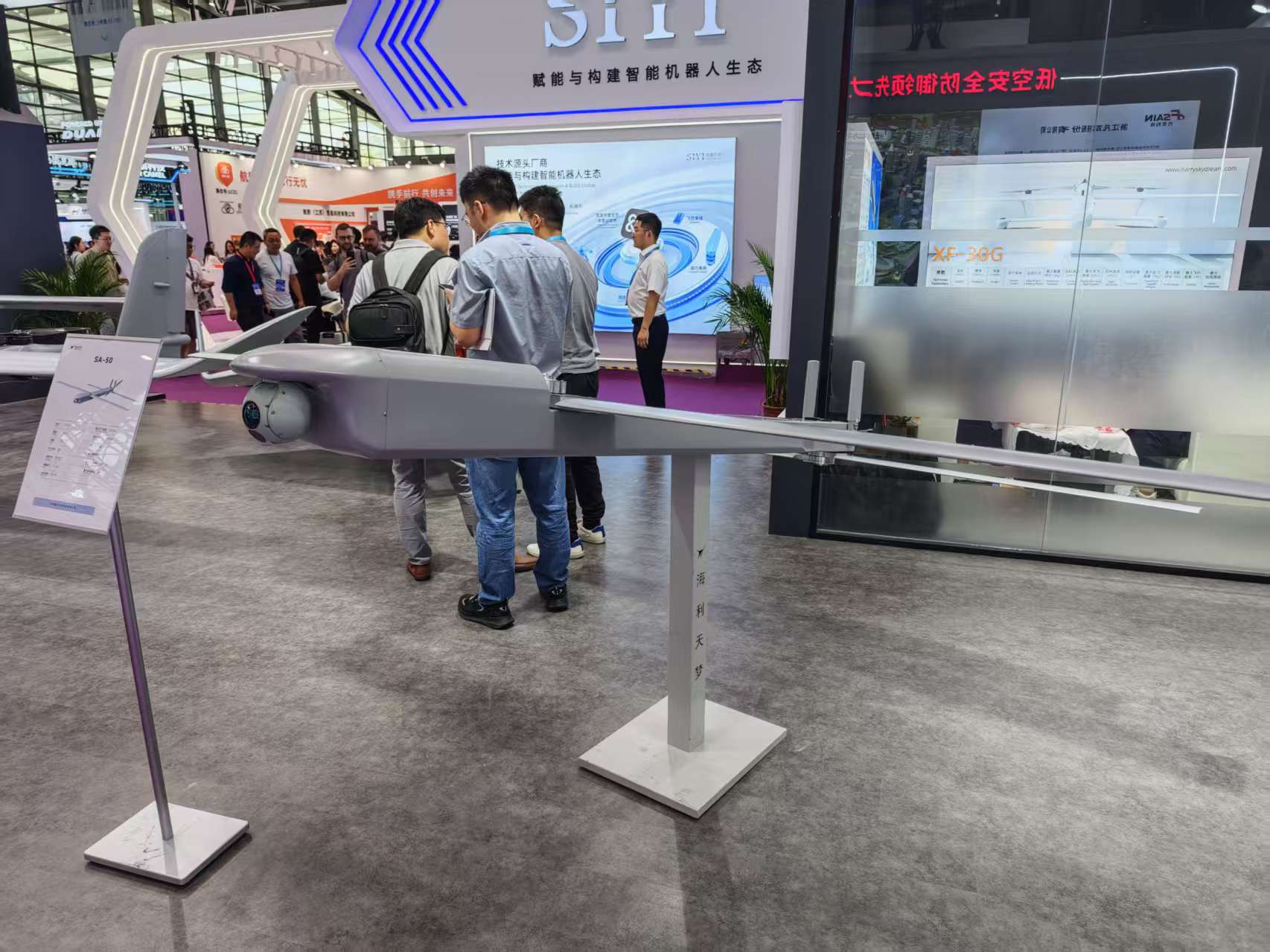
(Image source: Leitech)
Shenzhen Haming Technology's BETAFPV brought several of its micro FPV drone products.
Among these, the Pavo20 Pro O4 Pro garnered the most attention. Essentially, this product integrates the powerful DJI O4 Pro video transmission system into their main micro quadcopter, the Pavo20 Pro, released last year, providing an excellent choice for FPV pilots seeking high-quality image quality and a smooth flying experience.
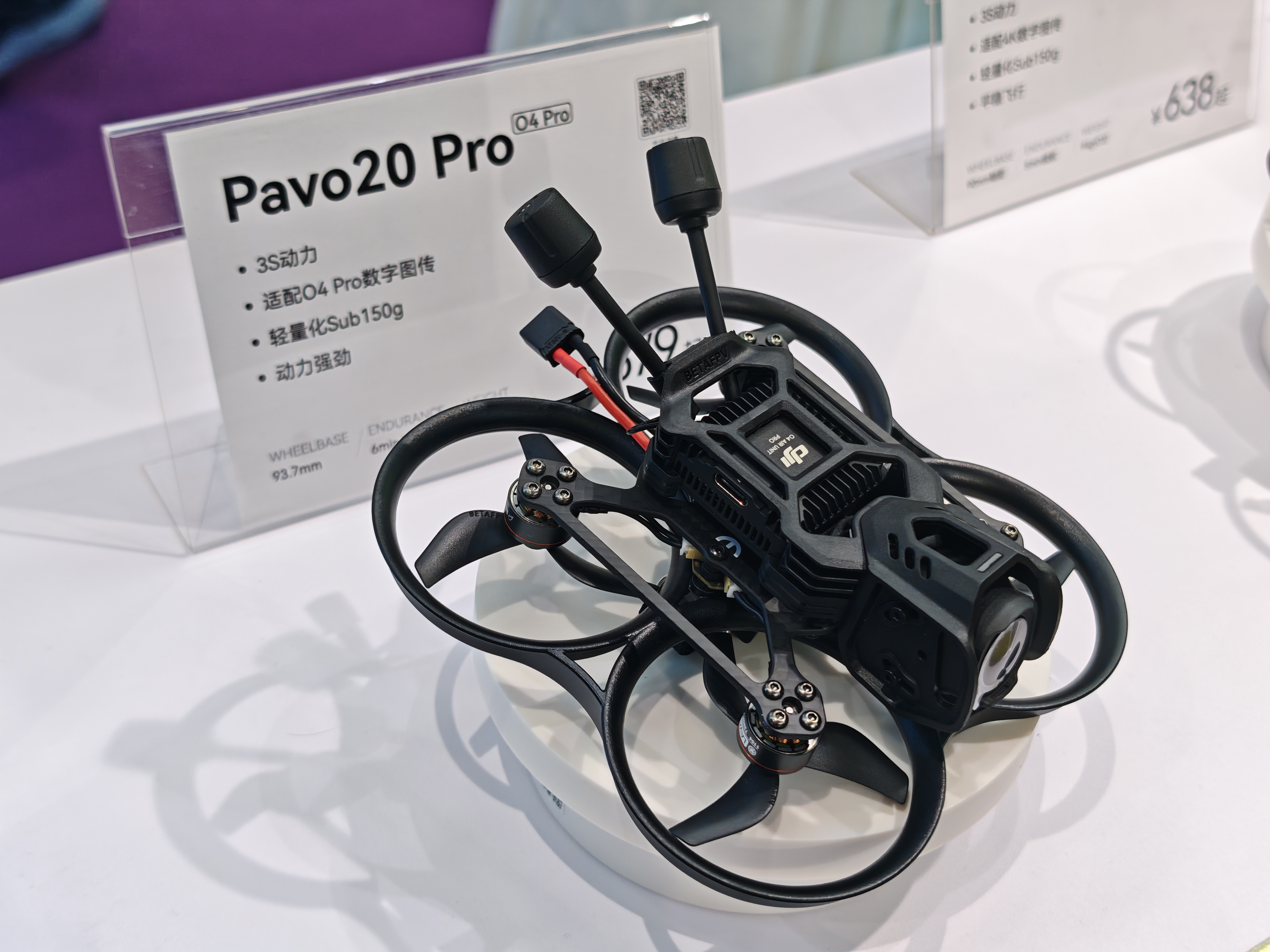
(Image source: Leitech)
Visitors could even experience it firsthand by checking in on-site. The feeling of FPV flying is quite addictive, now allowing you to fly without showing off.
However, the 2D image inside slightly dampened my excitement.
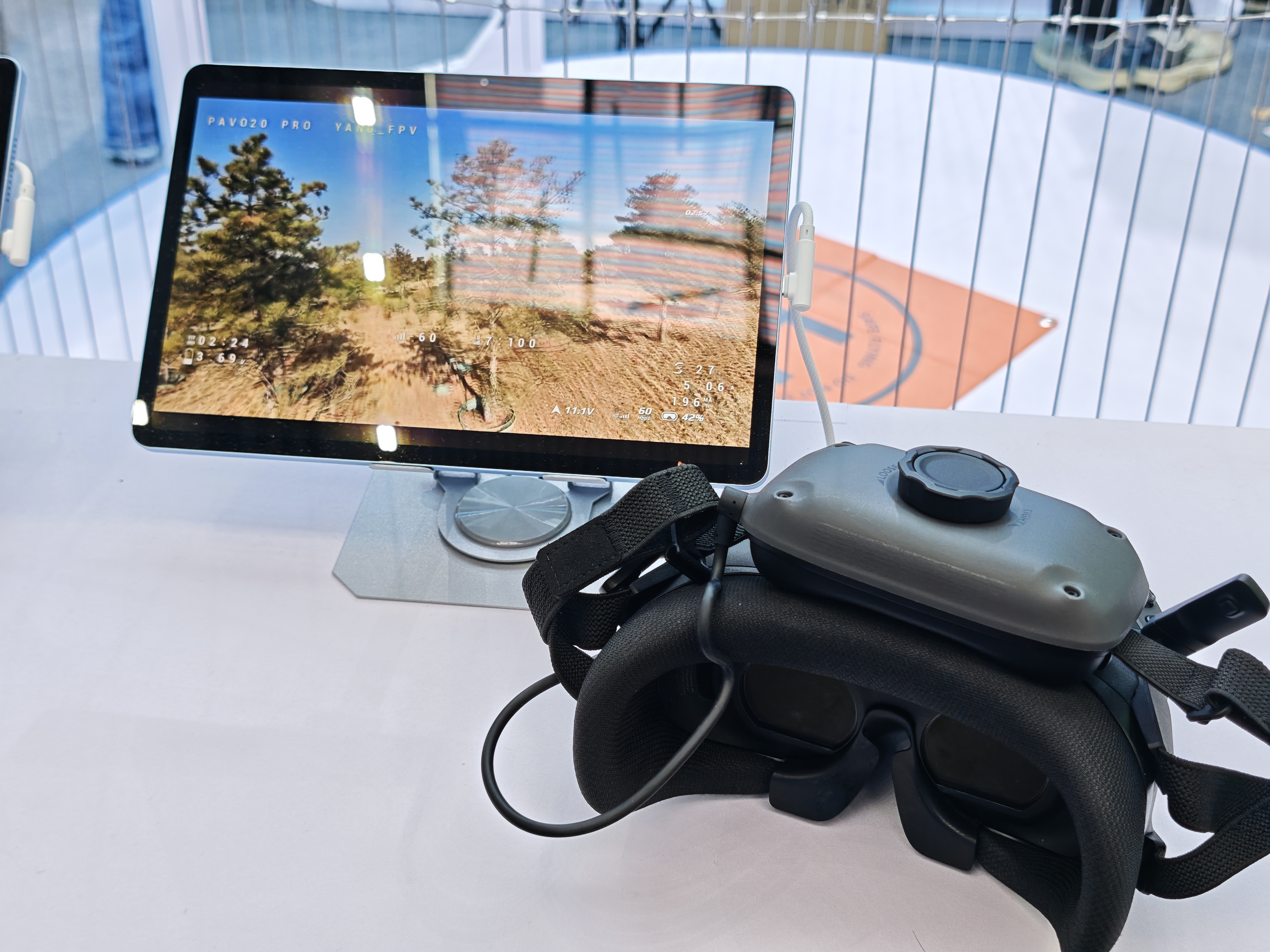
(Image source: Leitech)
Regarding other interesting finds, I did spot a few intriguing products at the exhibition.
YiFei Intelligent Control showcased an underwater exploration unmanned surface vehicle (USV) model, JH650. With a remote control distance of up to 15km and a maximum still water speed of about 20 knots, it can independently carry out seabed terrain reconnaissance missions in shallow waters within 400m, essentially extending the drone domain from the air to the water.
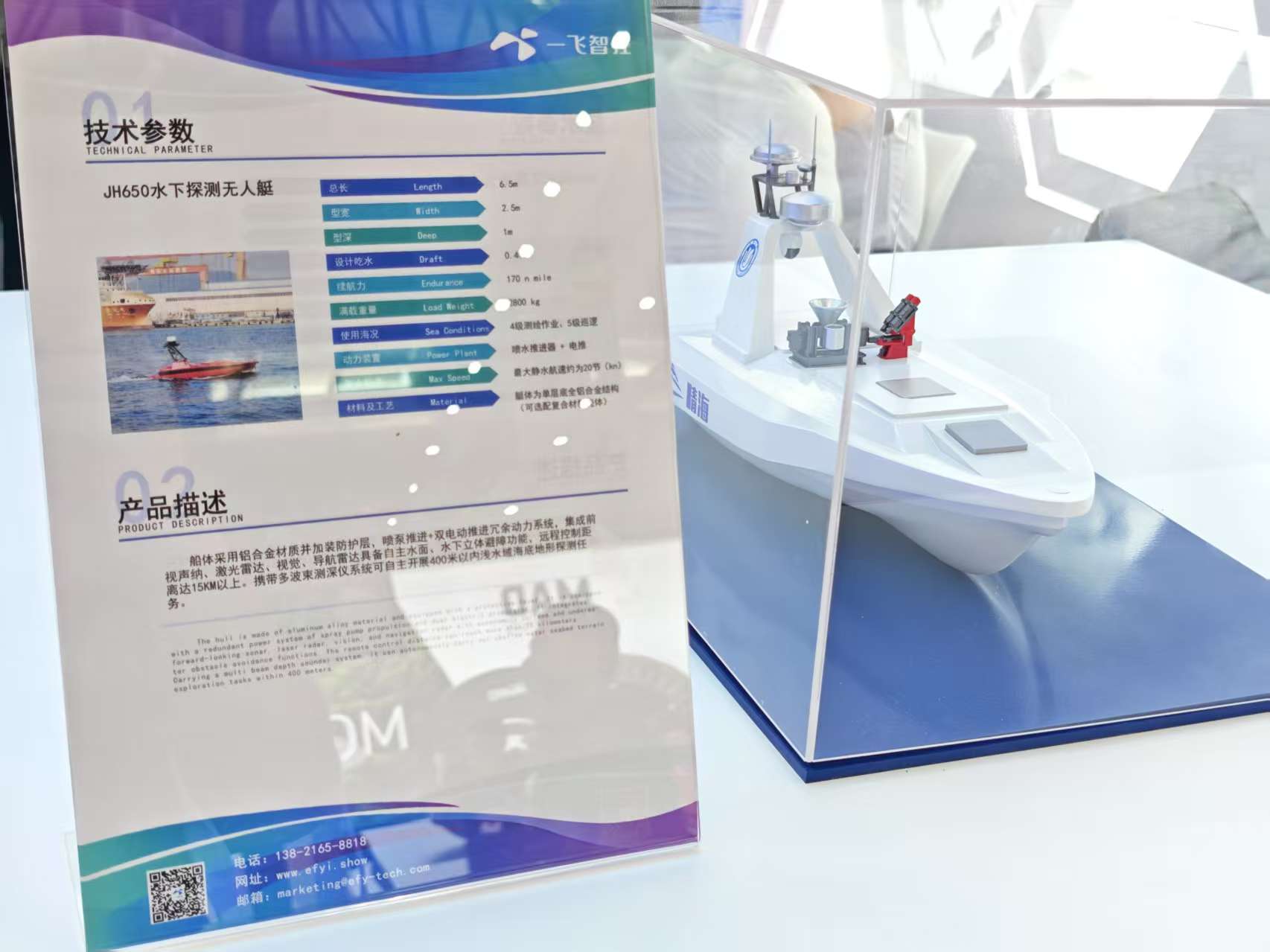
CloudMinds from Beijing showcased an interestingly designed drone hangar at the exhibition. It looked like this:
Isn't it reminiscent of Iron Man's chest armor?
By the way, this product also has a rather cringeworthy name: the Saint Max·Armor Fully Autonomous Drone Inspection System.
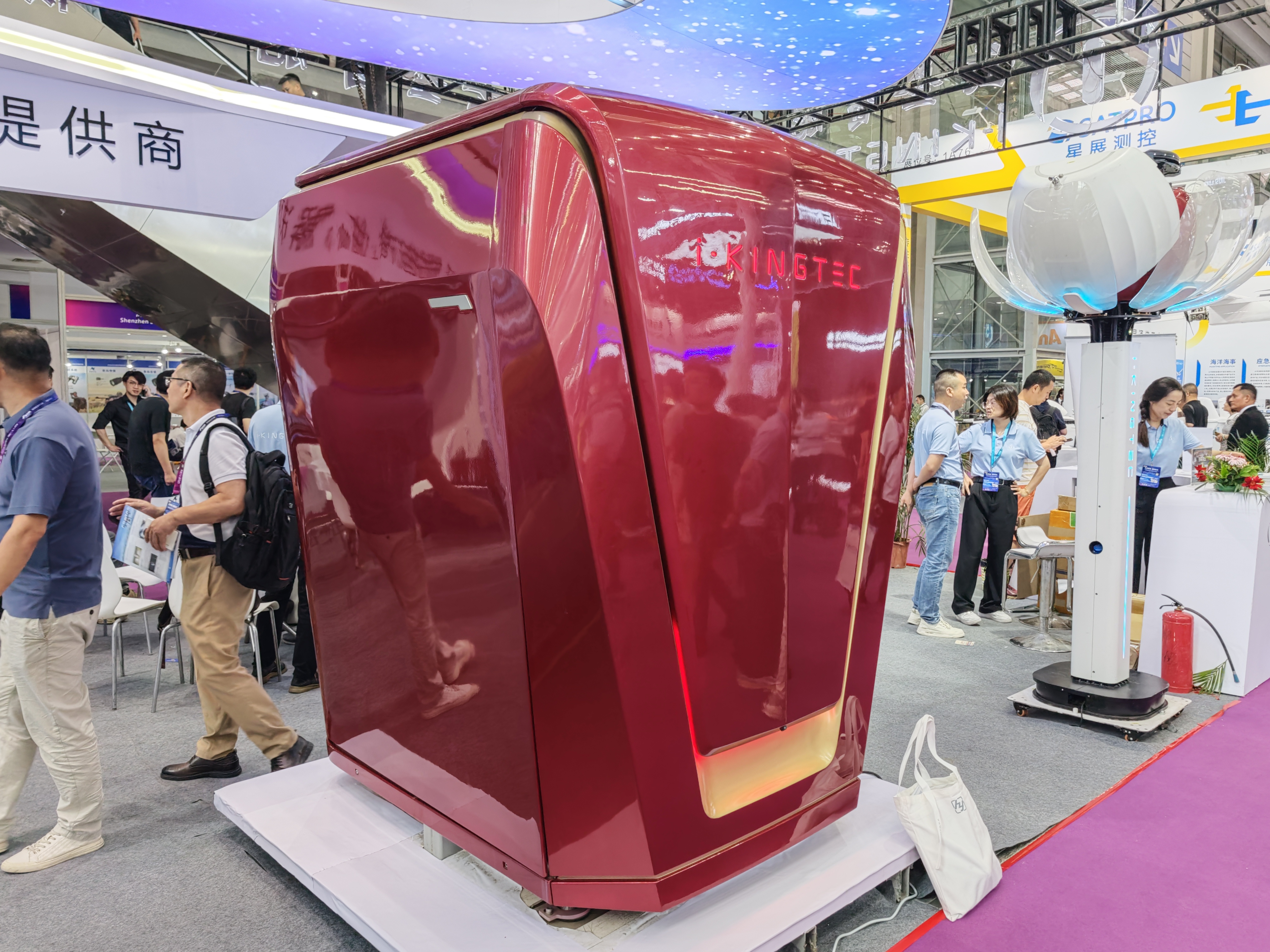
(Image source: Leitech)
According to booth staff, the hangar adopts a "one hangar, two drones" design, primarily targeting industrial-grade inspection applications. It supports parallel operation of two drones and alternating operation of a single drone, taking only one minute from receiving instructions to takeoff. It also features functions such as rapid charging and automatic pod replacement, theoretically covering an inspection range with a radius of 8km.
Based on my observation, this "drone + fully automatic airport (hangar)" or "Drone-in-a-Box" model is emerging as a significant trend in the current industrial drone field.
Many companies, including Zongheng Kunlun and Pusen Technology, promoted this type of integrated hangar at the exhibition. The popularization of such products is expected to address pain points such as high labor costs and limited efficiency in traditional drone operations, achieving truly unmanned, normalized, and intelligent inspection.
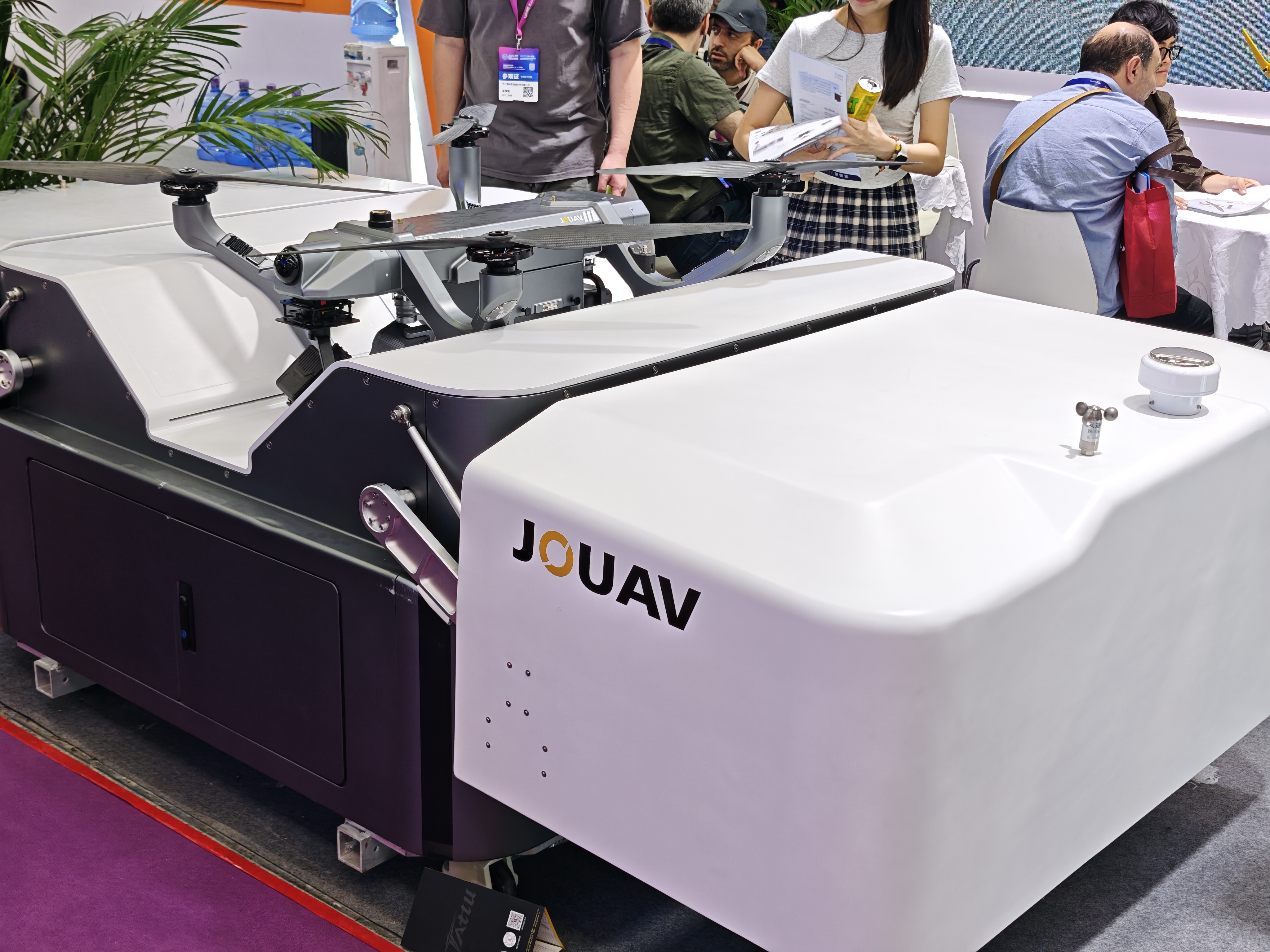
(Image source: Leitech)
Currently, CloudMinds has collaborated with Dongshan Culture and Tourism Group, striving to infuse strong digital and intelligent momentum into the development of the smart culture and tourism industry.
Rising Demand Accelerates Drone Industry Chain Upgrade
With the continuous expansion of the low-altitude economy, the drone industry chain is thriving.
Against this backdrop, UASE 2025 also featured industrial chain enterprises. Inside Hall 9, various innovative achievements were on display, including high-performance composite materials, high-density solid-state batteries, high-speed brushless motors, reconnaissance/countermeasures/jamming equipment, and other technologies, adapting to the rapid industry development.
At Beijing Jianfan Technology's booth, I saw various solid-state battery products.
Among them, the more eye-catching one was their TG series special batteries launched this year. With an energy density of 280Wh/kg, support for 5C continuous discharge, and a cycle life of 600 cycles (under 0.5/3C conditions), which is three times the life of conventional batteries, these batteries are deeply developed for drone education and training scenarios.
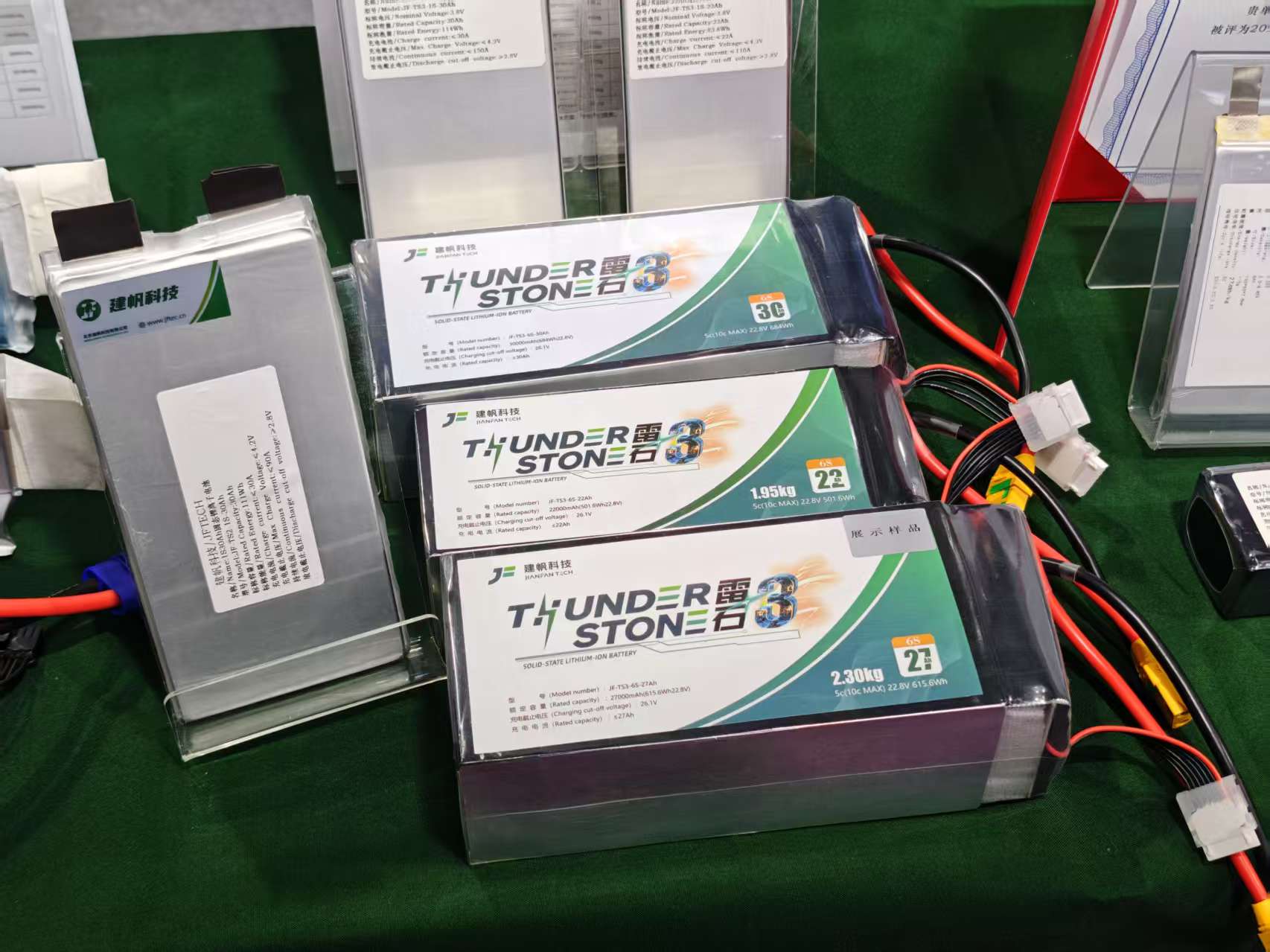
(Image source: Leitech)
Regarding product supply, booth staff acknowledged people's concerns about solid-state batteries but emphasized that they are one of the ultimate solutions to address the current energy density bottleneck and safety anxiety of lithium batteries. Relevant applications have been actively tested by companies like Zongheng Kunlun. With customized performance, stable output, ultra-long flight time, and other characteristics, the TG series batteries have also collaborated with many drone training institutions, proving their feasibility.
Currently, their experimental data has surpassed an energy density of 400Wh/kg, which is promising.
Additionally, manufacturers like Thrace Power and Jiaying Times exhibited solid-state batteries or semi-solid-state batteries at the exhibition, displaying an unprecedentedly consistent technical direction.
Further on, you could also see some countermeasures components.
Like the drone interference and interception equipment exhibited by Lizheng Technology, we've seen many similar products in recent years. At the exhibition, similar products have evolved into backpack-type drone jammers and anti-drone vehicle-mounted defense systems, primarily featuring precise strikes across all scenarios.
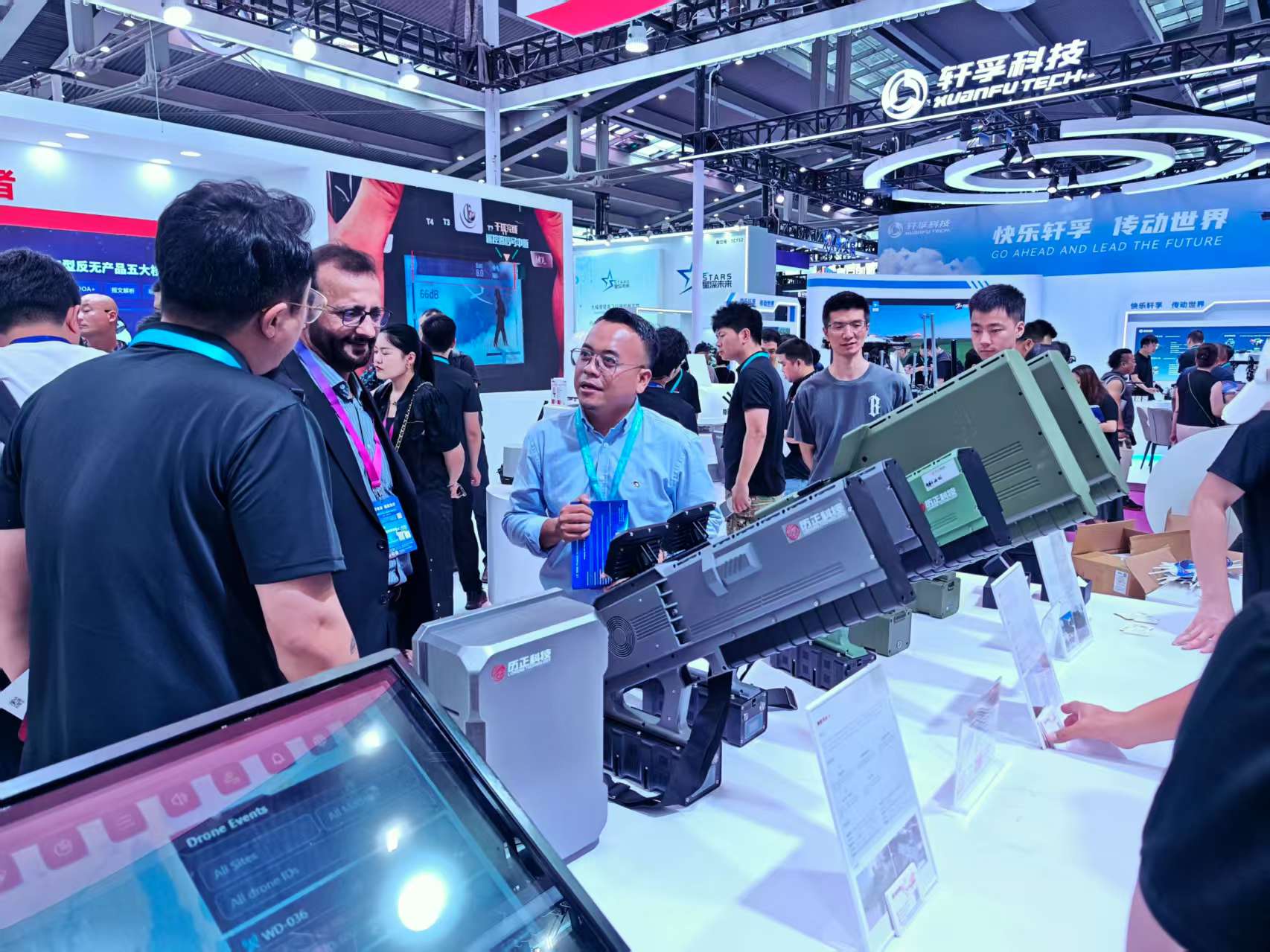
(Image source: Leitech)
At another booth across the street, Xingshen Future was showcasing its WL836 eight-channel anti-jamming system, claiming to counter seven interferences and operate in satellite-denied and strong magnetic interference environments. Similar anti-jamming modules were also common at the exhibition.
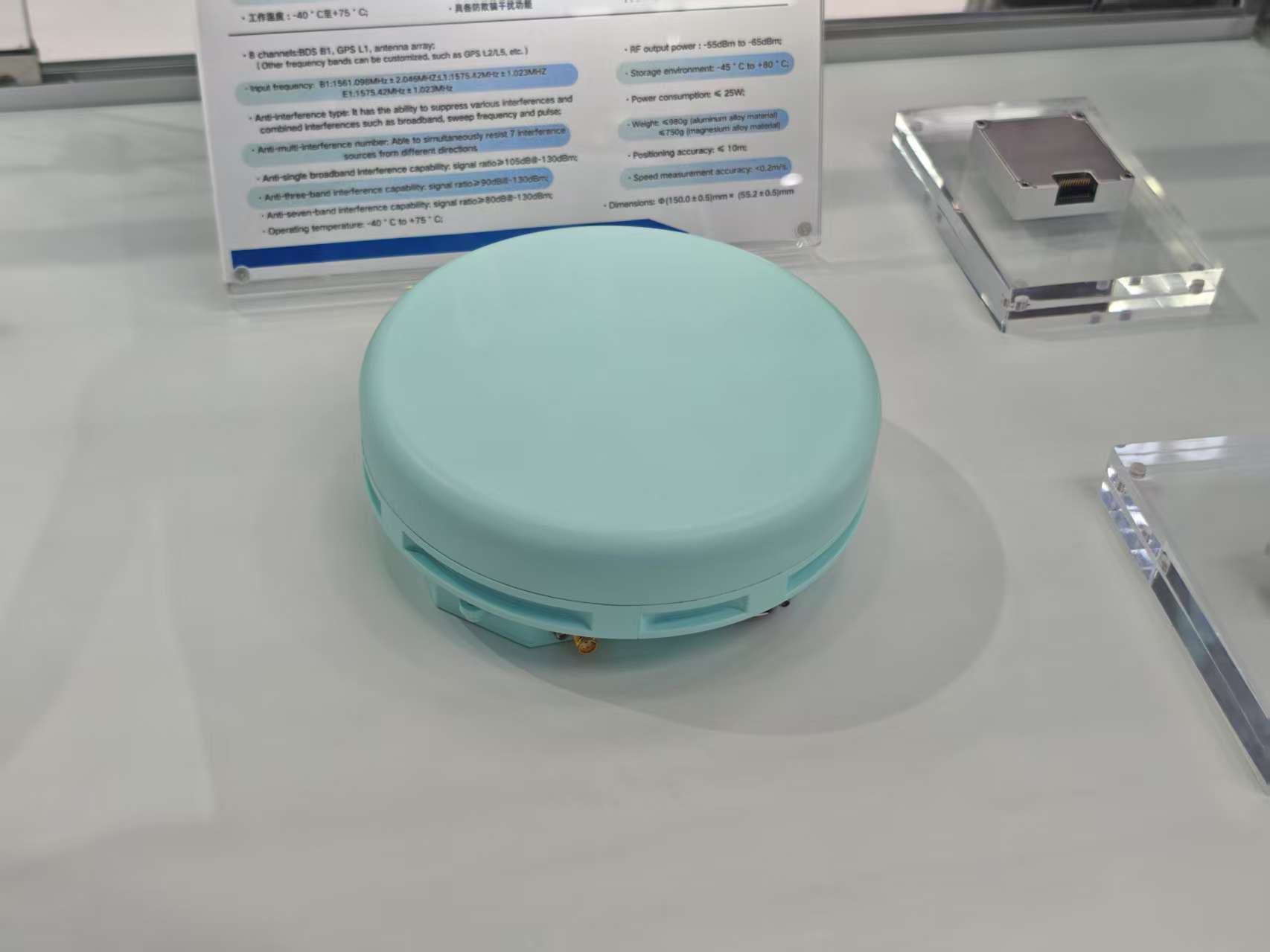
(Image source: Leitech)
The main idea is to have a solution for every problem.
Interestingly, compared to the lively UASE 2025, the material manufacturers in the exhibition hall seemed slightly overshadowed.
Zhongfu Shenying and Jilin Chemical Fiber, which gained popularity for allegedly providing carbon fiber materials for Xiaomi's SU7 Ultra, exhibited a series of materials including carbon fiber plates and carbon fiber precursors at the exhibition. Maide Electromechanical from Jiangxi, besides showcasing its new motor, also exhibited various composite parts, including the CB2 series carbon fiber ultra-light propeller.
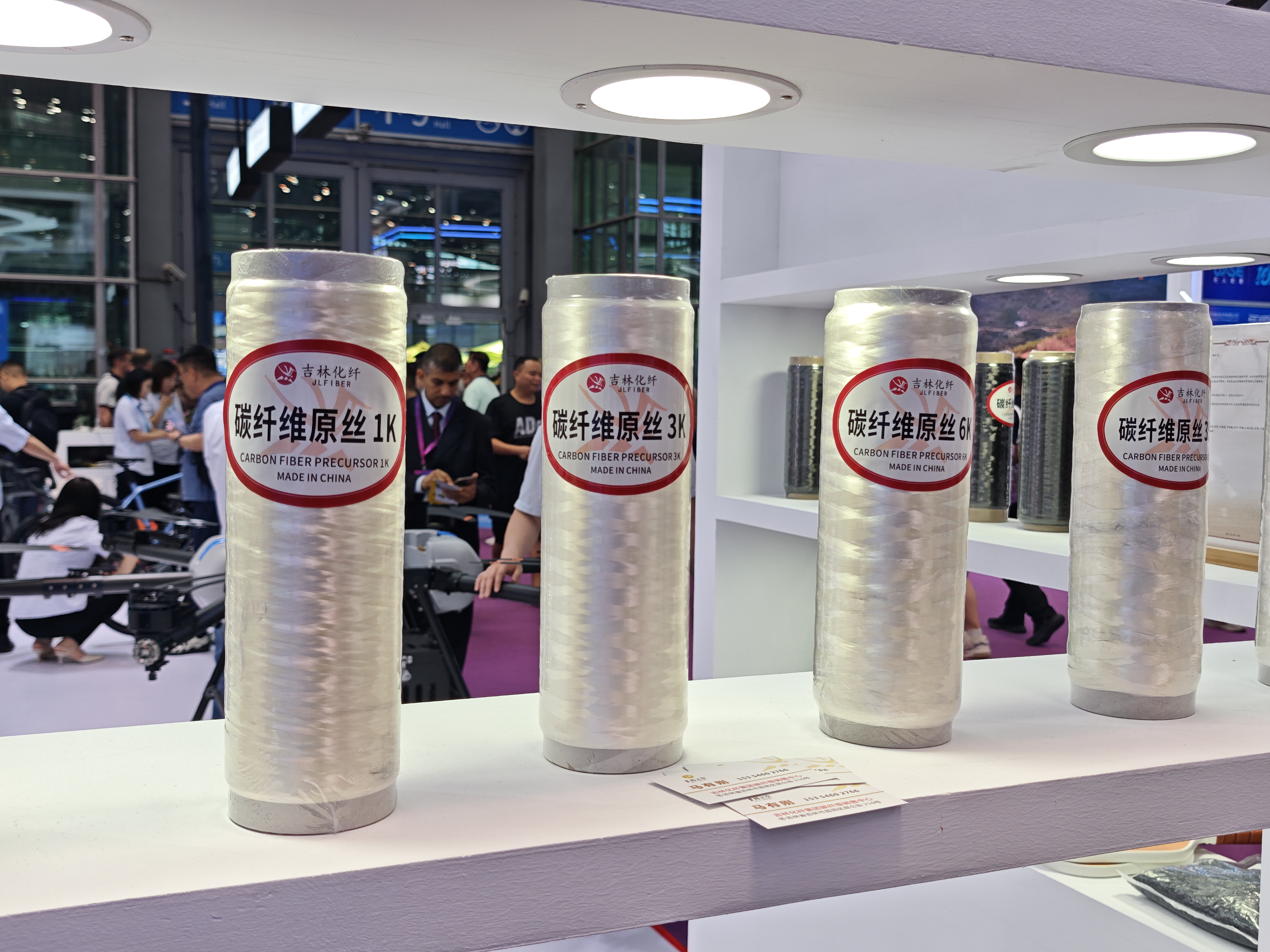
(Image source: Leitech)
Walking around the relevant booths, I found that many people were interested. Many manufacturers also regard the low-altitude economy as a vast potential market. However, most manufacturers' products lack significant differentiation, leading to intense price wars.
"Because material prices are transparent, material suppliers with manufacturing capabilities will definitely aim to supply manufactured parts," said an industry participant at the exhibition. "After all, from both value-added and technological perspectives, the gold content of manufacturing parts is much higher than that of pure material supply."
Becoming a composite material supplier with manufacturing capabilities will undoubtedly give them a significant price advantage in market competition.
Behind the Drone Boom: The Low-Altitude Economy Takes Off
For the low-altitude economy industry, 2025 marks a period of rapid development in China.
At the policy level, the country continues to introduce favorable policies, incorporating the low-altitude economy into the category of national strategic emerging industries. The National Development and Reform Commission has officially established the Department of Low-Altitude Economic Development, and local governments are actively deploying strategies to promote the reform of low-altitude airspace management and infrastructure construction.
In terms of technology, readers familiar with the digital industry are aware that the domestic battery industry has achieved a significant breakthrough this year. The leap in battery energy density is expected to significantly enhance the endurance and load capacity of drones and eVTOLs. The coordinated development of the new energy vehicle and aviation industry chains will further benefit the "three-electric system" (battery, motor, electric control) and airframe structures of these products.
Most importantly, just this Wednesday, the National Development and Reform Commission explicitly stated its intention to categorize and systematically expand the applications of the low-altitude economy. This shift paves the way for industry scenarios to broaden from traditional domains like agricultural and forestry pest control, geographic surveying, and mapping, to burgeoning areas such as urban air transportation, emergency rescue services, cultural tourism, and sightseeing tours.
Particularly in logistics and distribution, firms like Meituan, JD.com, and SF Express have been amassing drone delivery technology for years, poised for full-scale deployment. Drawing from my personal experience in participating in Meituan's drone delivery initiatives, the market potential remains vast and untapped.
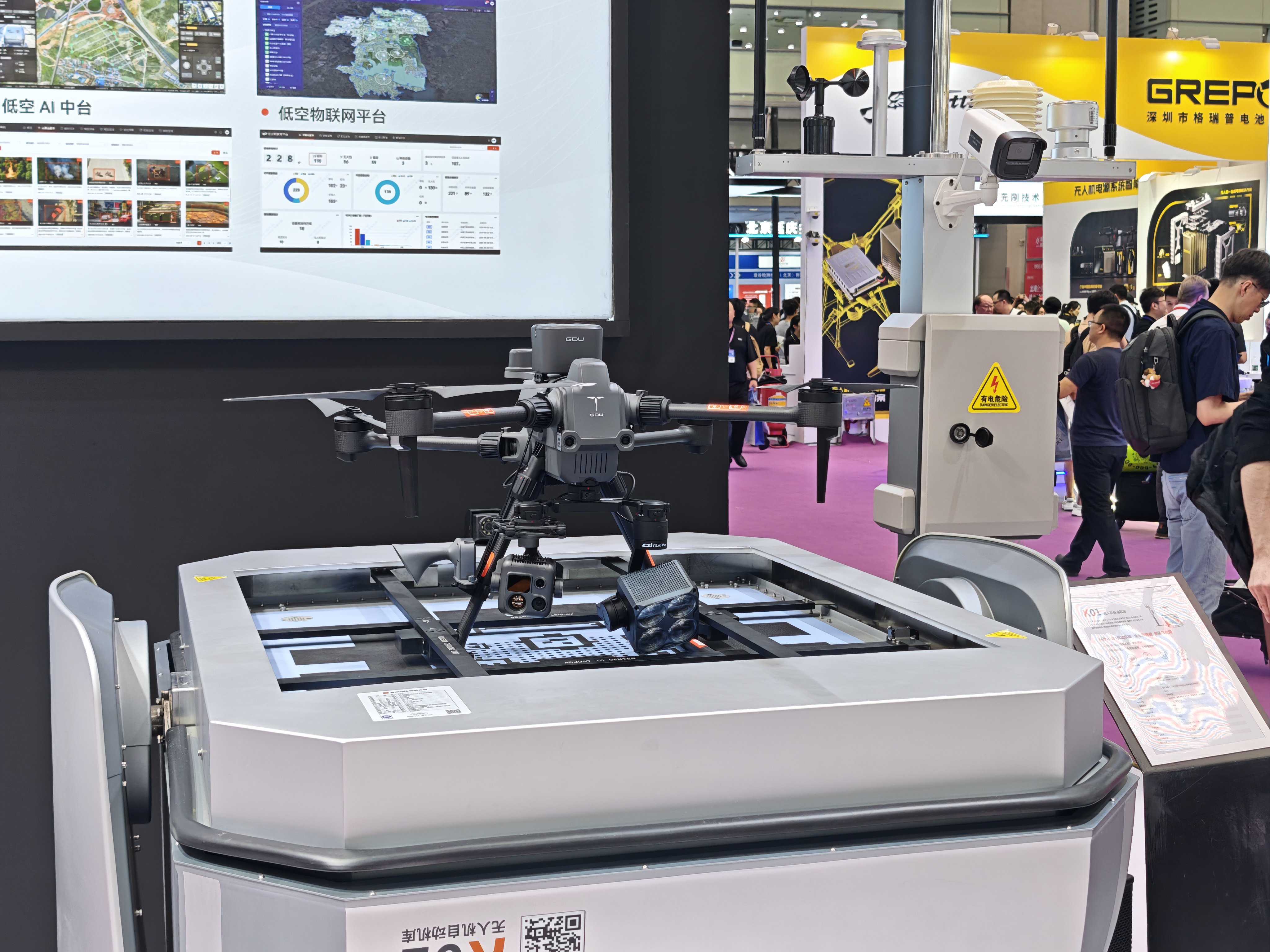
(Image credit: Lei Technology)
At UASE 2025, it is evident that domestic manufacturers are overwhelmingly receptive to these new policies.
From a supply chain perspective, the policy has markedly accelerated the iterative advancement of core components. High-voltage solid-state batteries continually pushing the boundaries of energy density, raw material enterprises actively diversifying into composite material components, a remote sensing platform leveraging drone automated inspection and AI intelligent analysis technology, and AI visual navigation technology grounded in neural networks, may each pursue distinct developmental paths, yet their objectives align.
This does not imply that the growth of the low-altitude economy will be unimpeded. For the time being, despite the promising advancements in solid-state batteries, practical application still appears to be some time away. Many technologies and composite materials displayed at the event are still in the promotional phase, and most second-tier drones exhibit limited differentiation. It remains uncertain when these technologies will be integrated into actual products.
Nonetheless, the enhancement of policies and standards has undeniably ushered in new development opportunities for the upstream industry. The dawn of eVTOL commercialization, the extensive expansion of drone application scenarios, and the accelerated construction of low-altitude intelligent networks will continue to propel industrial innovation and upgrading. In my view, this heralds the accelerated advent of a new era characterized by a more three-dimensional, efficient, and intelligent low-altitude economy.
I am confident that the skies in 2025 will hold more promise than ever before.
Source: Lei Technology

